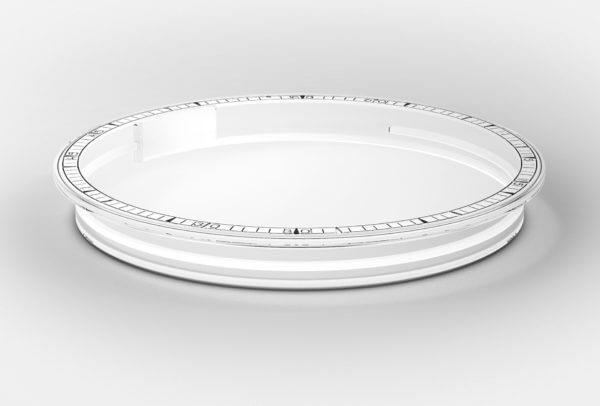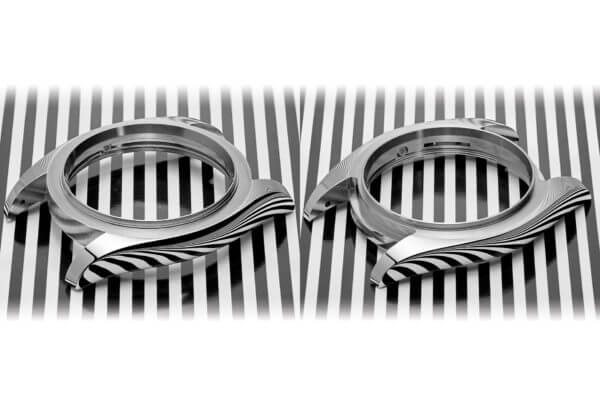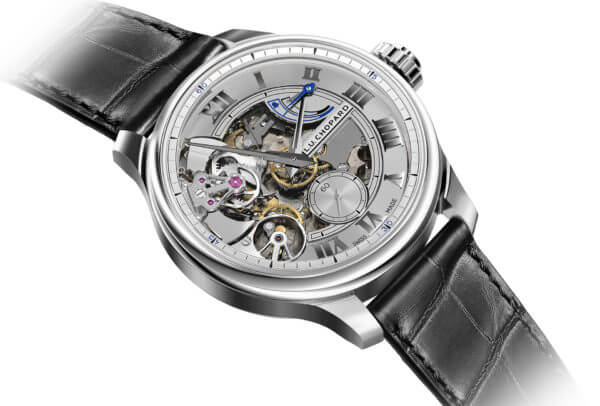Selling a watch has never been easy. Prior to reaching our wrist, these intricate, delicate, not to mention costly items spend their time behind glass, away from sticky fingers and indelicate hands. In these ideal conditions, manufacturers go for the “wow” factor. This has always been the case, but pulling on the customer’s heartstrings in the hope of reaching their purse strings is now an even more prevalent trend. Carefully studied light lines, showcasing of a particular group of components, or an innovative and ingenious function can transform cold mechanics into a highly covetable object. In the digital world, it’s given us ever more sophisticated and aspirational customer experiences. These were the topics under review before the 700 attendees at the Société Suisse de Chronométrie (SSC) “Technique & Emotion” symposium in Montreux on September 13th.
Transparent casebacks have been almost universally adopted, allowing the movement to "work its magic" and appeal to customers' emotions.
If there is one domain that appeals to our senses and our emotions, it has to be gastronomy. The experience is part and parcel of the concept: taste, smell, but also appearance, texture, even sound – biting into something crisp, for example – are all part of our encounter with the product. Where watches are concerned, things start to get considerably more complicated. Manufacturers are obliged to use other means, other sometimes subtle ploys to arouse interest and win us to their cause. Such intricacies involve both design and mechanisms, two areas of creativity that often end up overlapping. It’s this line of thinking which, from the early 2000s, sparked a wave of transparent casebacks that allow the movement to “work its magic” and appeal to customers’ emotions.

What’s true of watches is also true of cars, as Antony Villain, head of design at Alpine, reminded the audience in Montreux. The French sports carmaker was set up in 1955, taken over by Renault in 1973 and dropped in 1995. When the marque returned in 2015, one of the biggest challenges was to inject its ideology and identity, in particular that of the iconic A110 Berlinette, into a car for today. “We worked hard on contrasts such as legacy and modernity, sophisticated and raw, mechanical and sensual,” Villain explained. “This led us to introduce materials such as wood, leather and felt, but also ceramic, carbon and aluminium.” By the time the new A110 broke cover after a two-year online teaser strategy, excitement and anticipation were high, with the promise of success firmly on the cards.
By perfecting light lines we're dealing with the irrational, but it's a key element in the sensuality of the watch.
Emotion is in the details
Watchmakers can also go to extreme lengths when using detail to elicit an emotional response to their products. Rolex is one of the few, possibly only, brands to pay attention to light lines – the way light can draw out the shape of a case and its curve – and to have developed a high level of competencies in this field. Olivier Kuffer is a physicist at the head of Rolex’s wristwatch R&D division. He readily admits that “we’re dealing with the irrational, but it’s still a key element in the sensuality of the watch.” A simple experiment illustrates the idea: two virtually identical cases are set down on a flat, black and white striped surface. One case reflects the stripes harmoniously. On the other, they appear distorted and broken. “We’ve developed a continuous curve construction protocol to allow us to master these surfaces,” says Kuffer. These new processes have implied a complete reconfiguration of the rectification stage, which is now performed by a five-axes CNC machine. “We’ve gone from twenty lines of code to four pages of A4.”

Such a purely aesthetic concern remains the exception rather than the rule. Most of the time, design and mechanisms form a whole. Girard-Perregaux, Piaget, Patek Philippe and Chopard all came to the symposium to present their vision of how a watch can elicit the emotions. When the first of the four unveiled its Constant Escapement in 2008, followed by an improved version in 2013, it took everyone, and not just industry insiders, by surprise. This was the first time a watch manufacturer had succeeded in harnessing the principle of a flexible mechanism in a mechanical timepiece. The result is fascinating to observe, and superbly showcased on the dial side. At Piaget, emotion goes hand-in-hand with wafer-thinness. The brand proved its superiority in extra-thin movements with the presentation, this spring, of the Altiplano Ultimate Concept. Measuring 2 mm high in total, it stole the show at SIHH in Geneva. Its secret is to assemble components on two levels rather than four, with the caseback doubling as the plate.
The importance of experience
Patek Philippe applied itself to combining, for the first time ever, a minute repeater and a world time function – two of its most emblematic complications – in its Reference 5531R. More a fusion than a combination in fact, as the repeater always strikes local time, i.e. the time shown by the hands. What may seem like a detail to some, isn’t for others. Chopard, meanwhile, has the millennial demographic in its sights with the L.U.C Full Strike, as Louis de Meckenheim, chief marketing and communication officer, explained: “This is a generation that’s known nothing but global economic instability. They don’t see the point of putting money aside or investing in property or a car. They want experiences.” Hence everything about this minute repeater has been calculated for emotional appeal, starting with the exceptionally pure sound attained thanks to gongs that are cut from the same block of sapphire as the crystal. A world-first.

Still, the most surprising keynote of the day came from Inès Hamaguchi who spoke in defence of what she calls “the augmented hand”. An enamel artist in Val-de-Travers, she expressed regret that the tools of Industry 4.0 – virtual reality, augmented reality, AI and big data – are finding applications in every domain other than art and craftsmanship. Hamaguchi believes technology could extend the capacities of the human hand without actually replacing it, enabling artist and artisan to go beyond the peak of their abilities and creating new avenues to explore, a source of ever greater wonderment for the customer. For example, the robots currently used to perform keyhole surgery could enable craftsmen and women to work remotely or within an enclosed environment such as a furnace. Hamaguchi advocates a new role for watchmaking as an “incubator for the augmented hand!” Watch this space.




















